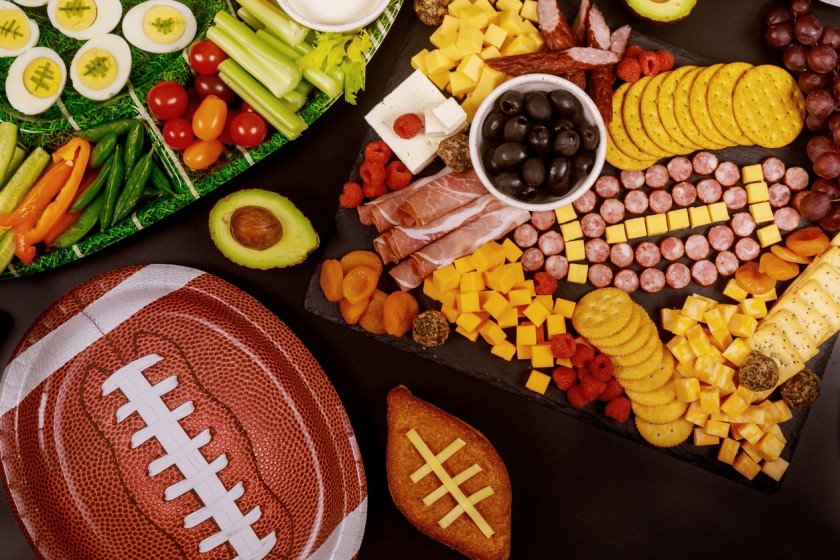Seven tips for choosing healthy Super Bowl snacks
Published: Jan 30, 2020By Tampa General Hospital

In this late-winter period of comfort-food days and Super Bowl party temptations, good health can fall by the wayside. So what do you do when you have arrived at the supermarket to pick up snacks for the big game or a get-together?
Here’s an easy way to help you stick to your goals: Avoid the big, often colorful nutrition claims boldly on display on the front of the box or bag. Instead, find and read the nutrition facts label.
And if it’s been a while since you’ve looked at these labels, you may need a refresher.
“The labeling guidelines changed in 2016,” said Meghann Scholl, RDN, LDN, a clinical nutrition specialist at Tampa General Hospital. “Former First Lady Michelle Obama focused on educating the public on nutrition, including working with the Food and Drug Administration to make labels more consumer-friendly.”
By now, just about all nutrition labels sport larger-font, front-and-center details on calories and serving sizes, as well as information on specific health-critical nutrients.
Here are Scholl’s top seven tips for what to look for on snack labels:
1. Serving size. A small bag of chips may look like a nice-size snack, but the label could prove it’s recommended for two or more servings. All the nutrients and amounts on the label are based on this specific figure, so be sure you’re not doubling – or tripling – your intake of calories, salt or other non-desirables.
2. Calories. The new food label is based on a 2,000-calorie-a-day diet, so consumers can easily calculate the daily values needed for their own diets. We all have different calorie needs, though, so it’s important that you take that into account when reading the label. A registered dietitian nutritionist can help identify the calorie range appropriate to meet individual nutrition needs. Monitor the number of calories you take in — still a surefire path to reach or maintain a healthy weight. There are plenty of apps and trackers on the market to help you keep count.
3. Sugar. One of the biggest changes under the new guidelines is how sugar is treated. Food generally has two kinds of sugar. There is sugar that occurs naturally in the product. Then there is refined sugar that a manufacturer adds to make it even sweeter. The old labels lumped both into a single category. The new label requires separate lines for natural and added sugar. An old label, for example, might say 12 grams of sugar and nothing more. The new label adds a line that says 10 of those 12 grams are added by the manufacturer.
“Research has shown that the more added sugar you consume, the higher your risk for chronic diseases like fatty liver or obesity,” Scholl said. “Separating the added sugars from the naturally-occurring ones helps people make better decisions about their food.”
4. Ingredients. The ingredient list should be short, and you should recognize each item. If something sounds unfamiliar or like a scientific compound, it’s likely highly processed and not your best choice. Look for natural, whole foods — particularly in the first five items of the ingredient list, which are the dominant ingredients.
5. Sodium. The recommended daily allowance of sodium is 2,300 mg or less, so try to select foods that have 140 mg of sodium or less per serving. The higher your sodium intake, the higher risk you have for elevated blood pressure, which affects everything from your heart to your eyes and kidneys.
6. Fats. Choose foods with 5 grams of fat or less, based on a 2,000-calorie-per-day diet. Don’t ingest more than 20 grams per day of saturated fats. Avoid trans-fat altogether.
7. Dietary fiber. Dietitians recommend 25 to 30 grams of dietary fiber every day. The best sources are fruits and veggies plus beans, lentils and whole grains. Fiber has myriad health benefits including improved digestion and a “full” feeling, which can help limit how much you eat and promote a healthy weight.
While nutrition labels are becoming more consumer-friendly, Scholl cautions that other front-of-package information might not be as helpful. “Basically, the information is used for product marketing. It’s important to take the next step and be a detective,” she said.
“Pay attention to the nutrition facts panel and ingredients to ensure you’re eating foods that fit within your health goals and are actually healthy for you. You’ll get more nutritional bang for your buck.”
